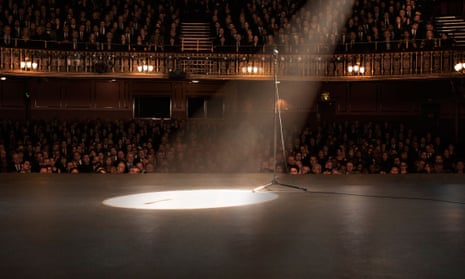Australia’s most prestigious musical theatre award, the Rob Guest Endowment, has come under criticism for lack of diversity in its semifinalist selections this year.
The lucrative program, which provides a $50,000 cash prize to be used for professional development, announced its 30 semifinalists on Thursday, and quickly came under fire from commentators across social media for selecting what appeared to be a uniformly white cohort.
Some past participants expressed their disappointment with the list, such as the previous finalist Elisa Colla.
“As a grateful past finalist I know how much of a wonderful opportunity the RGE is in assisting/nurturing emerging artists,” Colla said in a comment on the official announcement post on Instagram.
“But the lack of diversity here is hugely disappointing. Young BIPOC [black, Indigenous and people of colour] need opportunities like RGE to not only grow/develop their skills but to see themselves celebrated and represented in the Australian theatre industry. It would be great to see what steps are being taken by RGE to implement change so this doesn’t happen again.”
Many of this year’s semifinalists also expressed concern on social media about the apparent lack of diversity in the cohort. They issued a united statement to media on Friday, saying: “The 30 of us stand with artists and performers who are people of colour. We are uniting to listen, learn and actively be part of the solution.”
The endowment committee released a statement in response to the criticism via social media channels on Thursday evening, saying the contest was “open to all young performers of any ethnicity or colour” and that the organisation was “constantly striving for diversity”.
“The competition was widely publicised on social media, theatre websites and to over 100 agents and schools. We received a record 251 applications for this year’s award and the process does not make any attempt to document an entrant’s ethnic background. The only metric considered by our judging panel was talent. They did not consider race, colour, religion or gender when choosing a semi-finalist,” the statement said.
“We clearly need to work harder at encouraging entrants from the BIPOC community because we are seeing few entries from that community.”
The statement also said the endowment would “continue to work on our message that diversity can only be good for our industry”, encourage non-white members of the community to participate in the prize, and “seek ways to inject this thinking into the running of the competition including BIPOC appointments to our leadership team”.
It drew further criticism from some commentators, such as the writer Benjamin Law, who suggested that the statement implicitly placed the blame on non-white people for not participating.
There are still so many employers and judges who imply a lack of diversity in the lineup is somehow the fault of racial minorities not applying in droves.
— Benjamin Law 羅旭能 (@mrbenjaminlaw) August 20, 2020
Or that that because they don’t factor in race in their selection process, it’s somehow now a meritocracy based on talent.
The actor and Australian stage regular Bert La Bonte also commented on the statement from the Rob Guest Endowment, sharing his experience of teaching musical theatre to second-year university students.
“The disappointment from the diverse students yesterday was palpable,” La Bonte commented on Instagram. “A genuine feeling of ‘why am I even here?’ The guilt from the white students equaled that. Which is ridiculous. Now surely that’s NOT the future we are trying to build. Whether it was by design or just an oversight, your response to the situation is a fumbling backpedal. Just own it!”
Lena Nahlous, the executive director of Diversity Arts Australia, told Guardian Australia that a lack of diversity “usually reflects either a problem with the organisation’s engagement strategy or the absence of such a strategy”.
“If an organisation is undertaking an awards or recruitment process and they are seeing a lack of diversity in applications, then they need to stop that process and put in place an engagement process to facilitate greater diversity of applications [or] participation,” she said.
“They also need to look at their criteria. Does their idea of artistic excellence exclude particular artistic forms and indeed many artists of colour?”
A process of equity and inclusion needed to begin long before advertising a program, and should start with establishing processes for ethical engagement and active participation, including cultural safety for artists of colour, Nahlous said.
“Artists of colour are not simply ‘overlooked’, but are actually excluded from these processes through the ways which these programs are designed and as a result of other systemic issues,” she said. “Diversity must be embedded into all levels of the organisation – governance, practice, programming and engagement.”
The Rob Guest Endowment committee have been contacted for comment.
